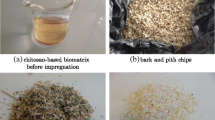Summary
The applicability of models for describing the short-term properties of chipboard were investigated using the results from experiments conducted on samples of a laboratory-made chipboard (comprised of Scots pine chips and urea formaldehyde resin), and sections of urea formaldehyde and Scots pine strips.
The “rule of mixtures” equations, modified for short fibre composites, were employed to predict the strength and stiffness of chipboard. They were found to provide a good estimate of both the chipboard strength and modulus of elasticity, with the assumptions being made that the chips were aligned parallel to the direction of applied stress and that the chips could be treated as having cylindrical geometry.
The results of this investigation revealed that chipboard is a highly unusual material. Compared to conventional fibre-reinforced composites, chipboard has a very high volume fraction of fibres, and the similar moduli of elasticity of the fibres and matrix can result in the concentration of stress in the matrix rather than in the fibres. However, these factors did not prevent the assessment and development of appropriate short fibre composite models to predict the strength and stiffness of chipboard.
Similar content being viewed by others
References
Cox HL (1952) The elasticity and strength of paper and other fibrous materials. Br. J. Appl. Phys., 3, 72–79
Dinwoodie JM (1989) Wood: Nature's Cellular, Polymeric Fibre-Composite. The Institute of Metals, London
Gerhards CC (1982) Effect of moisture content and temperature on the mechanical properties of wood: an analysis of immediate effects. Wood and Fiber, 14(1), 4–36
Gressel P (1984) Zur Vorhersage des langfristigen Formänderungsverhaltens aus Kurz-Kriechversuchen. Holz Roh-Werkstoff, 42, 293–301
Hull D (1981) An introduction to Composite Materials. Cambridge University Press, Cambridge
Kelly A, Tyson WR (1965) J. Mech. Phys. Solids, 13, 329
Koponen S, Toratti T, Kanerva P (1989) Modelling longitudinal elastic and shrinkage properties of wood. Wood Sci. Technol., 23, 55–63
krenchel H (1964) Fibre Reinforcement. Akademisk Forlag, Copenhagen
Mundy J (1998) Contribution of the creep of the components of chipboard to its total creep. Accepted for publication in Wood Sci. Technol.
Pierce CB, Dinwoodie JM, Paxton BH (1985) Creep in chipboard. Part 5. An improved model for prediction of creep deflection. Wood Sci. Technol., 19, 83–91
Steiner PR, Dai C (1993) Spatial structure of wood composites in relation to processing and performance characteristics. Part 1. Rationale for model development. Wood Sci. Technol., 28, 45–51
Author information
Authors and Affiliations
Rights and permissions
About this article
Cite this article
Mundy, J.S., Bonfield, P.W. Predicting the short-term properties of chipboard using composite theory. Wood Sci.Technol. 32, 237–245 (1998). https://doi.org/10.1007/BF00704846
Received:
Issue Date:
DOI: https://doi.org/10.1007/BF00704846




